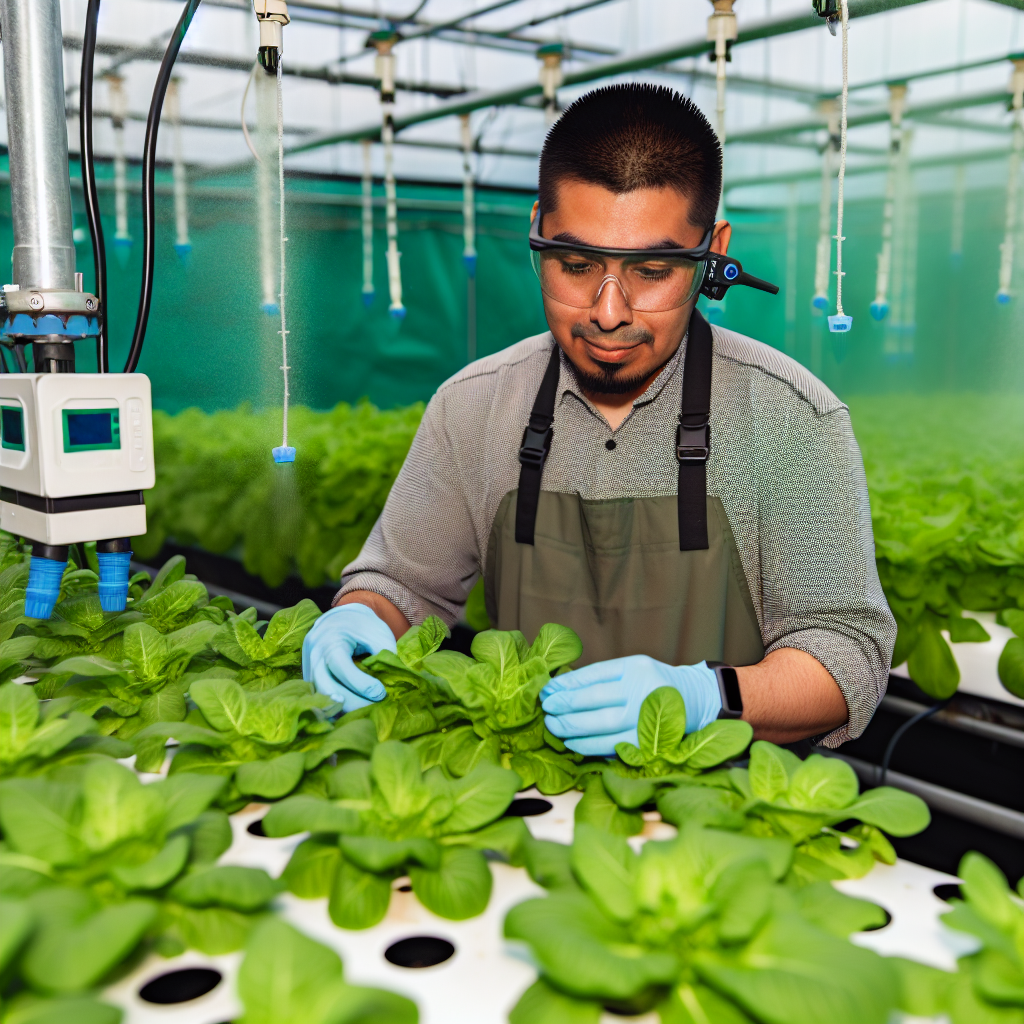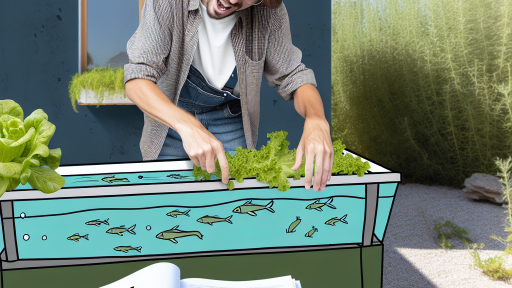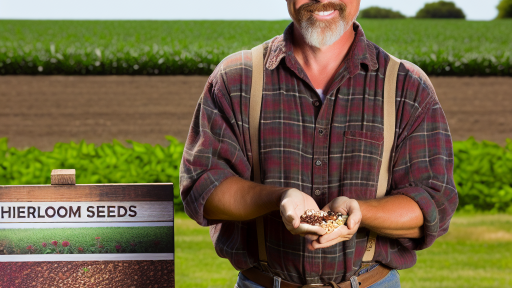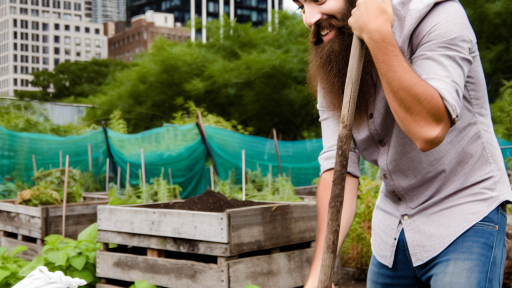Introduction to Hydroponic Systems
Hydroponic systems utilize a method of growing plants without soil.
Instead, they rely on nutrient-rich water solutions to nourish the plants.
This innovative approach allows for efficient use of space and resources.
In recent years, hydroponics has gained popularity among urban gardeners.
Individuals can now grow fresh produce right at home.
Moreover, hydroponic systems are environmentally friendly and sustainable.
They require less water compared to traditional farming methods.
As a result, hydroponics reduces the need for pesticides and herbicides.
This method also allows for year-round cultivation of plants.
Notably, hydroponic systems can be tailored to fit various indoor settings.
From small apartments to larger commercial operations, options exist for everyone.
Furthermore, this technique maximizes crop yields by providing optimal growing conditions.
The precise control over nutrient levels promotes healthy plant growth.
In addition, hydroponics enables faster growth cycles compared to soil-based methods.
Understanding these benefits encourages more people to explore hydroponics.
Transform Your Agribusiness
Unlock your farm's potential with expert advice tailored to your needs. Get actionable steps that drive real results.
Get StartedUltimately, hydroponics represents the future of sustainable agriculture.
Top Leafy Greens for Hydroponics
Overview of Leafy Greens
Leafy greens are a popular choice for hydroponic systems.
They grow quickly and provide numerous health benefits.
Additionally, they thrive in nutrient-rich water without soil.
Benefits of Hydroponic Leafy Greens
Hydroponically grown leafy greens have superior nutritional profiles.
They contain vital vitamins and minerals essential for health.
Furthermore, they often have fewer pesticides compared to traditional methods.
First Recommended Green: Lettuce
Lettuce is one of the easiest leafy greens to grow hydroponically.
It prefers cooler temperatures, usually between 60 and 70°F.
Lettuce comes in various types, including romaine and butterhead.
Nutritional Benefits
Lettuce is low in calories but high in vitamins A and K.
Moreover, it provides fiber, supporting digestive health.
Growth Tips
Use a nutrient solution rich in nitrogen for optimal growth.
Monitor pH levels, keeping them between 5.5 and 6.5.
Second Recommended Green: Spinach
Spinach adapts well to hydroponic systems.
It thrives in slightly warmer conditions, ideally 65 to 75°F.
This green is renowned for its rich flavor and nutrients.
Nutritional Benefits
Spinach is packed with iron, calcium, and vitamins C and K.
Its high antioxidant content boosts overall health.
Growth Tips
Choose a well-balanced nutrient solution for best results.
Regularly prune the leaves to encourage new growth.
Third Recommended Green: Kale
Kale is a nutrient powerhouse, making it a fantastic choice.
It thrives in varying conditions, from cool winter months to warm summers.
This leafy green is known for its hardiness and versatility.
Showcase Your Farming Business
Publish your professional farming services profile on our blog for a one-time fee of $200 and reach a dedicated audience of farmers and agribusiness owners.
Publish Your ProfileNutritional Benefits
Kale is rich in vitamins A, C, and K, promoting immune health.
Moreover, it contains high levels of antioxidants beneficial for the body.
Growth Tips
Water regularly to maintain consistent moisture levels.
Additionally, use a nutrient mix with higher potassium for enhanced growth.
Fourth Recommended Green: Swiss Chard
Swiss chard offers beautiful colors and delicious taste.
It grows well in warmer temperatures, ideally 70 to 80°F.
This green tolerates various growing conditions, providing flexibility.
Nutritional Benefits
Swiss chard is high in vitamins A and K, enhancing bone health.
It also provides magnesium and potassium, essential for heart health.
Growth Tips
Ensure adequate light exposure for healthy growth.
Use a balanced nutrient solution to maximize flavor and nutrition.
Fifth Recommended Green: Arugula
Arugula is a fast-growing green with a peppery flavor.
It prefers cooler temperatures, around 60 to 65°F.
This green can be harvested within weeks of planting.
Nutritional Benefits
Arugula is rich in vitamins K, A, and C.
Additionally, it contains glucosinolates, which may offer cancer protection.
Growth Tips
Provide sufficient light to promote lush green leaves.
Thin out seedlings for improved growth and airflow.
Best Herbs for Hydroponic Cultivation: Varieties and Care Requirements
Popular Herb Varieties
Many herbs thrive in hydroponic systems.
Basil is a favorite due to its aromatic leaves.
Mint also grows well and adds flavor to dishes.
Cilantro has a unique taste and is widely used.
Parsley fits well in compact spaces and grows quickly.
Chives are another excellent option for hydroponics.
Care Requirements for Hydroponic Herbs
Providing the right nutrients is essential for herb growth.
Use a balanced nutrient solution specifically for herbs.
Adjust pH levels to maintain optimal growth conditions.
Light is crucial; herbs generally need 12 to 16 hours a day.
Ensure your system has proper airflow to avoid mold.
Water temperature should remain stable, ideally around 68 to 72°F.
Starting Your Hydroponic Herb Garden
Begin with quality seeds or seedlings from a trusted source.
Prepare your hydroponic system according to guidelines.
Monitor the growth daily for signs of nutrient deficiencies.
Regularly check for pests and diseases to ensure plant health.
Harvest herbs regularly to promote bushier growth.
Common Challenges in Hydroponic Herb Cultivation
Poor water quality can hinder plant development.
Inconsistent lighting can lead to leggy plants.
Prevent over-fertilization, which can damage roots.
Pest infestations can occur; inspect plants frequently.
Maintain environmental conditions to reduce stress on plants.
Showcase Your Farming Business
Publish your professional farming services profile on our blog for a one-time fee of $200 and reach a dedicated audience of farmers and agribusiness owners.
Publish Your ProfileExplore Further: Harvesting Techniques For Container-Grown Plants
Fruiting Plants in Hydroponics: Recommendations and Growing Conditions
Tomatoes
Tomatoes thrive excellently in hydroponic systems.
This fruit requires a warm environment with consistent temperatures.
Opt for varieties like ‘Cherry’ or ‘Roma’ for better yields.
Ensure sufficient light, ideally around 14-16 hours daily.
Additionally, maintain a pH level between 5.5 and 6.5.
Cucumbers
Cucumbers flourish in hydroponics due to their rapid growth rate.
They prefer warmer climates, with temperatures around 65-75°F.
Choose varieties such as ‘Japanese’ or ‘Slicing’ for optimal results.
Adequate space between plants promotes good airflow.
Keep the nutrient solution pH between 5.5 and 6.5 to support growth.
Peppers
Both sweet and hot peppers are great choices for hydroponics.
These plants thrive in warm conditions, ideally around 70-80°F.
Consider varieties like ‘Bell’ or ‘Jalapeno’ for your garden.
Ensure they receive at least 12-16 hours of light daily.
A nutrient-rich solution will support their rapid growth.
Strawberries
Sawberries are rewarding when grown hydroponically.
They thrive in cooler temperatures, ideally between 60-70°F.
Use varieties like ‘Albion’ or ‘Seascape’ for continuous fruiting.
Maintain a slightly acidic pH level, around 5.5 to 6.2.
Use a light schedule of about 12-14 hours to encourage fruiting.
Squash
Squash varieties adapt well to hydroponic systems.
They prefer warmer temperatures, generally around 70-80°F.
Choose squash varieties like ‘Zucchini’ or ‘Butternut’ for best results.
Provide plenty of sunlight, ideally around 14 hours a day.
Monitor nutrient levels closely to ensure healthy growth.
You Might Also Like: Scaling Your Hydroponic Farm Successfully
Root Vegetables and Hydroponics: Challenges and Best Practices
Understanding the Basics of Hydroponics for Root Vegetables
Hydroponics is a growing method that uses nutrient-rich water.
This technique eliminates the need for soil.
Root vegetables can thrive in hydroponic systems with careful management.
Examples include carrots, radishes, and beets.
However, these plants face unique challenges in hydroponic systems.
Identifying Challenges for Root Vegetables in Hydroponics
One major challenge is maintaining proper depth for root growth.
Root vegetables typically require more space than leafy plants.
Additionally, the weight of mature crops can stress the system.
Ensuring adequate support is essential for healthy growth.
Another issue is regulating nutrient levels.
Root vegetables often have specific nutrient needs that must be met.
Ignoring these requirements can lead to poor yields.
Best Practices for Growing Root Vegetables Hydroponically
Start with selecting suitable varieties for hydroponic systems.
Showcase Your Farming Business
Publish your professional farming services profile on our blog for a one-time fee of $200 and reach a dedicated audience of farmers and agribusiness owners.
Publish Your ProfileChoose fast-growing varieties to test your system’s viability.
Next, ensure that your hydroponic setup has enough space for roots.
Consider using deep water culture or vertical farming techniques.
Regularly monitor pH and nutrient levels in your system.
Adjust these parameters to suit the specific needs of your crops.
Finally, provide adequate support and aeration for growing roots.
Utilizing net pots can help with stability and health.
Suggestions for Successful Hydroponic Root Vegetable Production
Consider incorporating companion planting techniques.
This approach can improve overall plant health and yields.
Moreover, ensure that your hydroponic system receives sufficient light.
Use grow lights if natural sunlight is inadequate.
Regularly prune and maintain plants to enhance growth.
Keep the system clean to prevent disease and pests.
Finally, experiment to find the best conditions for your specific setup.
Find Out More: Integrating Fruit Trees in Small Farms

Seasonal Considerations: Choosing Plants Based on Grow Periods
Spring Planting Choices
Spring is an ideal time for starting new hydroponic plants.
Many herbs thrive in warmer weather, encouraging rapid growth.
Consider planting basil, cilantro, and dill during this season.
Additionally, lettuce varieties like butterhead and romaine are excellent choices.
These plants enjoy the longer daylight hours of spring.
Summer Planting Advantages
Summer provides optimal conditions for heat-loving plants.
Tomatoes and peppers flourish when temperatures rise.
Cucumbers and zucchini also see impressive growth in summer.
Moreover, consider growing beans for a protein-rich option.
Keep in mind that regular monitoring is essential during hot temperatures.
Fall Planting Strategies
Fall presents unique challenges and opportunities for hydroponics.
Many hardy greens grow well in cooler conditions.
Spinach and kale are excellent plants for fall cultivation.
Also, root vegetables like radishes can be harvested quickly.
Ensure proper light conditions as days become shorter.
Winter Planting Options
Winter is not the end of hydroponic gardening.
Many hearty plants can still thrive in a controlled environment.
Consider growing microgreens for a fast and nutritious crop.
Herbs like parsley and chives can be grown indoors.
Moreover, you can experiment with indoor lighting to support plant growth.
Discover More: Seed Storage Tips Every Farmer Should Know
Hydroponic systems allow plants to grow without soil.
They use nutrient-rich water instead, providing essential elements directly to the roots.
This method can lead to faster growth and higher yields.
Moreover, it conserves water compared to traditional gardening.
Showcase Your Farming Business
Publish your professional farming services profile on our blog for a one-time fee of $200 and reach a dedicated audience of farmers and agribusiness owners.
Publish Your ProfileWhen starting, select plants that are easy to grow.
Consider growth rate, nutrient requirements, and space needed.
Some plants adapt better to hydroponics than others.
A variety of plants work well for beginner hydroponic systems.
Here are some excellent choices suitable for newcomers:
- Basil
- Mint
- Lettuce
- Spinach
- Strawberries
Basil thrives in hydroponic setups and grows quickly.
It also requires minimal maintenance, making it perfect for beginners.
Mint is similarly easy to cultivate.
Its fragrant leaves add flavor to numerous dishes.
Lettuce is one of the most popular hydroponic crops.
It grows rapidly and can be harvested multiple times.
Spinach is another fantastic option, packed with nutrients.
These greens require similar care and nutrient levels.
Strawberries can also flourish in hydroponics.
They may require a bit more attention than leafy greens.
However, the satisfaction of growing your own fruit is worth it.
To ensure success, monitor your plants regularly.
Check nutrient levels and adjust water pH as necessary.
Additionally, provide adequate light for optimal growth.
With care and attention, your hydroponic garden will thrive.
Future Trends in Hydroponic Plant Cultivation: Innovations and Sustainability
Emerging Technologies in Hydroponics
Advancements in hydroponic technology continue to reshape plant cultivation.
Automated systems enhance efficiency and conserve resources.
The integration of artificial intelligence streamlines monitoring and maintenance.
Moreover, new lighting technologies improve plant growth rates.
Growers can now easily customize light spectra to suit different plant needs.
Sustainable Practices and Materials
Sustainability remains a core focus in hydroponic systems.
Many growers are adopting organic inputs to reduce chemical use.
Recycling and reusing water and nutrients lead to more efficient systems.
Innovative materials, such as biodegradable growing mediums, are gaining popularity.
This minimizes environmental impact while maximizing productivity.
Vertical Farming Innovations
Vertical farming continues to be a major trend in urban agriculture.
It allows growers to maximize space and yield in limited areas.
Advanced aeroponic and aquaponic systems are emerging as efficient alternatives.
This approach reduces the need for traditional land-based farming.
Additionally, it can substantially decrease transportation emissions.
Consumer Trends and Market Opportunities
The demand for fresh, local produce is on the rise.
Consumers are increasingly seeking sustainably grown food options.
This trend presents opportunities for hydroponic growers to expand their markets.
Partnerships with local grocery stores and restaurants can be beneficial.
Educating consumers about the benefits of hydroponics also enhances market potential.
Showcase Your Farming Business
Publish your professional farming services profile on our blog for a one-time fee of $200 and reach a dedicated audience of farmers and agribusiness owners.
Publish Your ProfileCollaborative Research and Development
Collaboration between universities and industry leaders is crucial.
Research on crop genetics and nutrient solutions is ongoing.
This partnership will drive innovation and improve crop varieties.
Additionally, knowledge sharing among growers fosters community growth.
Such collaboration enhances the sustainability of hydroponic practices.
Additional Resources
Urban Agriculture and Innovative Production | Home
How I Grow Hydroponic Tomatoes Indoors With Lights (7 Steps)




